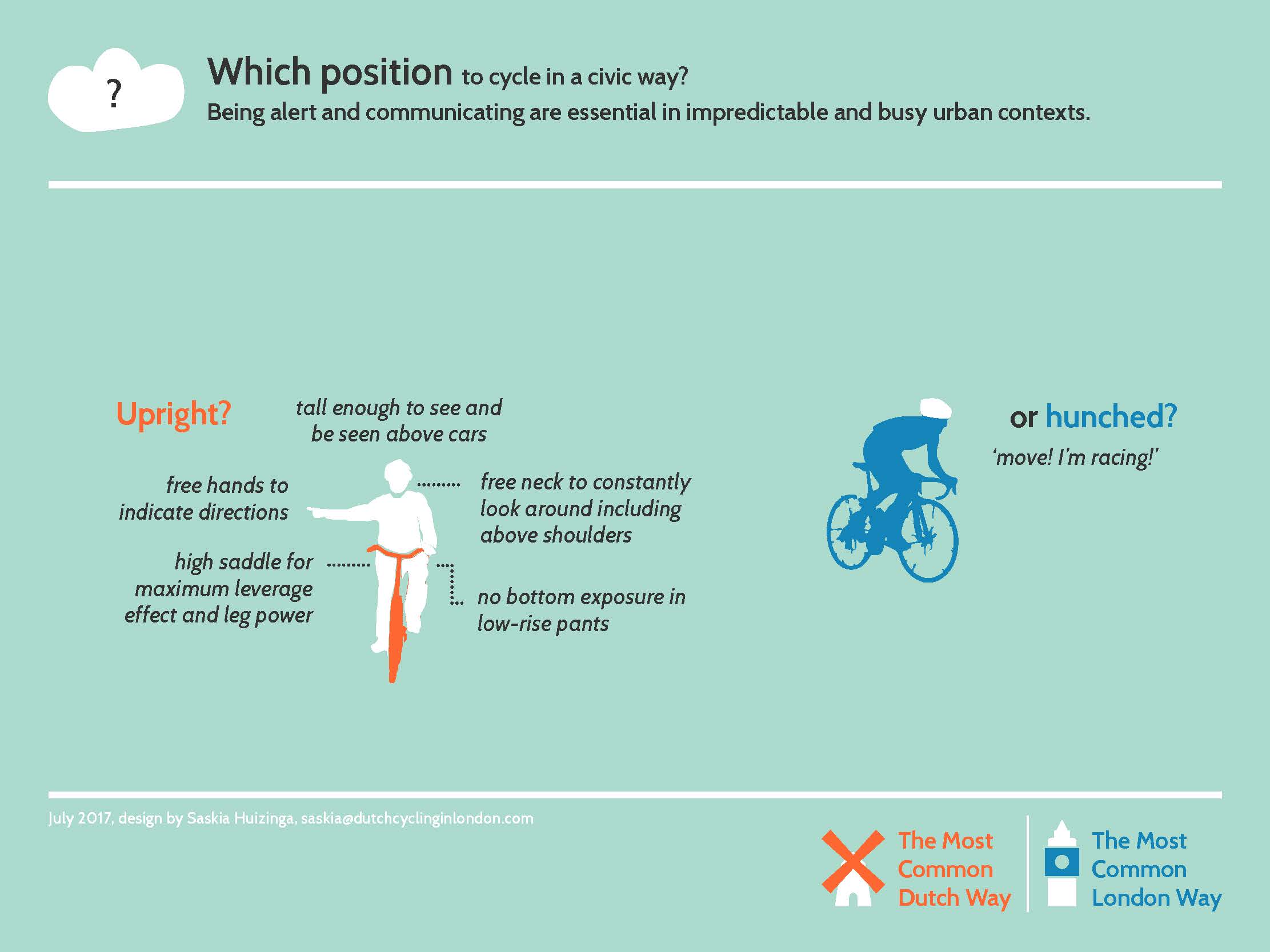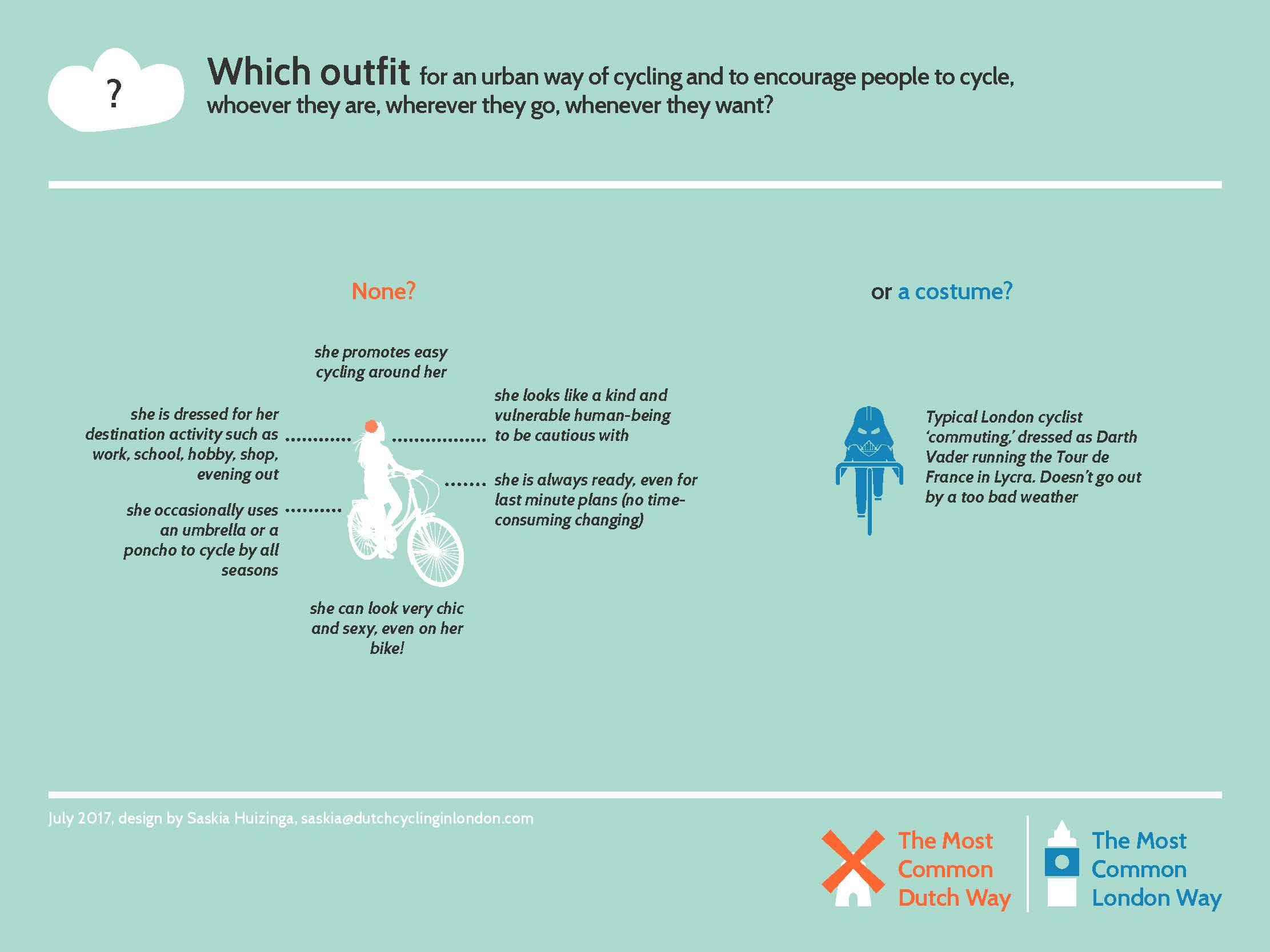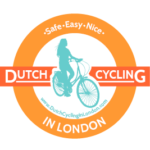DISCOVER
photo@fietschic

What are the benefits of upright bikes in an urban context?
1. Rest your back and neck
The upright position allows you to have your head, body and legs aligned. This is very comfortable and very similar to the position you have when you walk. A lower position obliges cyclists to unnaturally bend their neck to look well in front of them. In addition, hunching over instead a sitting upright brings more stress on the body because of gravity (and especially while wearing a rucksack!).
2. Use your hands and be social
Both mountain and road bikes force cyclists to share their weight on both their saddles and handlebars. That means that these cyclists need to keep their hands on their handlebars otherwise they would fall. An upright position on a city bike, where the weight is mostly placed on the bottom, and where there’s no pressure on the hands, allows you to use one hand or even two – if you’re very skillful – to, for example:
- Indicate where you’re going! I can’t stress enough how important it is. Let’s be civic cyclists please my friends.
- Blow your nose or scratch your chin.
- Hold an umbrella or the hand of your girl/boyfriend (very common in the Netherlands).
- Wave to a friend or a beautiful girl / handsome guy… or do some other gestures if you feel like!
3. Look around you 360°
On a race track or in the wild, you do not need to see 360 wide, but in every city and especially a busy city like London, it is extremely important to be aware of your environment to stay safe and not have an accident. On a road or mountain bike, the lower position prevents you from turning your head to look around, especially behind us and above car roofs!
4. Be Tall and Visible
Yes, on a city bike, you’re taller. Crouched on a race or mountain bike, you might be hidden by other vehicles, and it is not safe for you to be invisible by other road users, especially trucks.
5. Keep balanced and stop easily
Gravity again, a vertical force, makes it difficult for hunched-over cyclists to stay balanced at a low speed or nearly stationary position. In an urban context, it is necessary to be able to cycle at a low speed at junctions, while overtaking buses, when we see kids playing near the road, when we cross a crowded park, etc.
Cycling just like on a race track is actually very dangerous as we might not be able to stop or deviate in time in case unforseen happens. Think, for example, of traffic lights going red, pedestrians suddenly crossing the street, or city buses pulling to or away from a stop. It’s very important to be able to quickly adapt in order to stay safe. And that’s impossible if we ride too fast.
Too hilly?
You still think London is too hilly for a city bike? Did you know city bikes had gears too? 3 to 8 are more than enough for our London little hills. Also you’ve been told that the Netherlands is flat and that cycling there is effortless? Strong Dutch wind falsifies this myth. That’s not a reason for them to abandon their comfortable and easy-riding bicycle.
Try out?
What about trying using a comfortable city bike and see what it feels and how people are interacting with you?

Sign up to our newsletter



